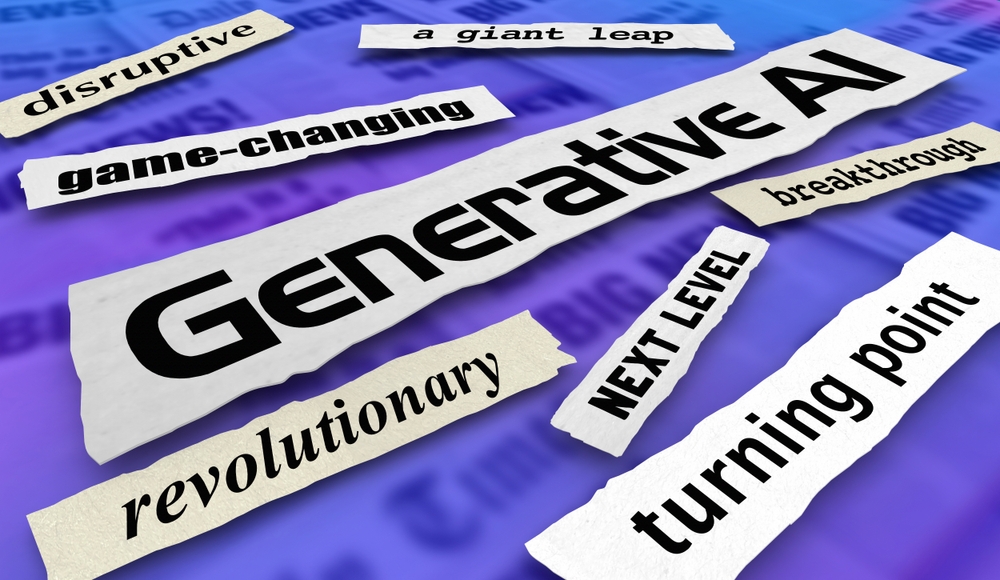BLOG
Finds and Interests

Image: Shutterstock
For the past two weeks—since eBay released its 2023 Q1 financials—there’s been a big stink about the company’s plan to incorporate generative AI product descriptions into its listing workflow.
We are in the process of integrating the ChatGPT API into our core listing flow and will soon launch a beta release of a plug-in that enables sellers to automatically generate text for their item description based on known product attributes. . . . Sellers will soon be able to pre-populate categories and item specifics from a single photo, enabling them to spend less of their time inputting inventory and more on growing and managing their businesses.
The emergence of generative AI for online product descriptions poses both a threat and an opportunity for online sellers. While it may cause errors to proliferate and increase product returns, it also allows businesses to differentiate themselves by creating original content that stands out from their competitors.
Let me point out that although generative AI may be useful for writing descriptions for new consumer products such as electronics or clothing, it is not appropriate for antiques and collectibles. In my March 2023 article, “I Tested AI Product Descriptions; The Results Are Faulty,” I recount a “conversation” with Chat GPT about creating AI product descriptions. It didn’t go well.
With antiques and collectibles, there are too many variables that AI cannot parse: age, condition, rarity, demand, and provenance, for starters. Each item—even of the same make and model—will differ in these respects. These one-of-a-kind items require careful research and inspection and descriptions written by experts who understand the finer points of curation.

Image: Shutterstock
Generative AI Product Description Threats
While AI may appear to be a convenient way to generate large amounts of content quickly, there are concerns about the accuracy and effectiveness of these automated systems. Before incorporating this technology into their operations, companies must carefully assess whether it corresponds with their values.
One major issue with generative AI is that it can cause errors to proliferate rapidly. Inaccuracies in product descriptions could lead customers to purchase items that aren’t what they expected, resulting in increased returns and dissatisfied customers. This hurts the reputation of individual sellers and damages the credibility of online marketplaces.
Another concern is that generative AI-driven product descriptions may be scraped by other websites, spreading inaccuracies over the internet. This has significant implications for dealers who rely on accurate information to decide which products to buy or sell.
Moreover, when errors infect secondary marketplaces like Etsy or eBay, they can quickly spread among sellers who rely on generative AI descriptions to price and categorize their products. Without accurate product descriptions, dealers risk selling their products for too little, losing profits, or not selling them at all when buyers sense that items are overpriced. Buyers may become distrustful as a result, and they may seek out more trusted sources elsewhere.
While generative AI has advantages in terms of time savings and efficiency in generating product descriptions at scale, we must address issues related to scraping content from one site to another. We need a better approach that prioritizes originality and accuracy above automation.
Generative AI Product Description Opportunities
Online sellers that work hard to develop clear and attractive product descriptions may see generative AI as a threat. However, it allows businesses to stand out when creating unique and original content.
Businesses can use generative AI to assist in creating an infinite number of informative and interesting product descriptions. However, using generative AI to create original content does not necessarily imply that human writers will be replaced entirely. Instead, it allows humans and AI to work together to develop high-quality product descriptions that fulfill customers’ needs while separating the company from its competition.

Image: Shutterstock
Write Like a Human, with an Assist From AI
Generative AI can provide a framework for your descriptions. But to keep them unique, you need to add personal touches to give the description an individual flair. For example, you might briefly tell how you acquired the item or a bit about its provenance. When an item’s details are couched within your story, AI may capture it, but other sellers aren’t likely to use it. Once they have stripped away the story, they will be left with a bare-bones description. Here are a few other tips:
- Vary the lengths of sentences.
- Use contractions like “can’t” and “don’t.”
- Avoid repeating phrases.
- Express emotion.
- Use slang and popular phrases; they sound more natural.
Generative AI shouldn’t be ignored completely. Instead, savvy businesses can strategically incorporate this technology into their sales strategy. When using generative AI technology, online sellers must prioritize accurate product descriptions over quantity or speed of content creation. Sellers can avoid returns and earn greater customer confidence while benefiting from this new technology by ensuring their listings contain clear and genuine product information.
While there are risks to using generative AI in online selling, businesses can mitigate these risks and capitalize on the technology’s benefits. They can produce interesting product descriptions that attract customers while minimizing errors by balancing human expertise and machine-generated content.
Will Seippel is the CEO and founder of WorthPoint®, the world’s largest provider of information about art, antiques, and collectibles. An Inc. 500 Company, WorthPoint is used by individuals and organizations seeking credible valuations on everything from cameras to coins. WorthPoint counts the Salvation Army, Habitat for Humanity, and the IRS among its clients.